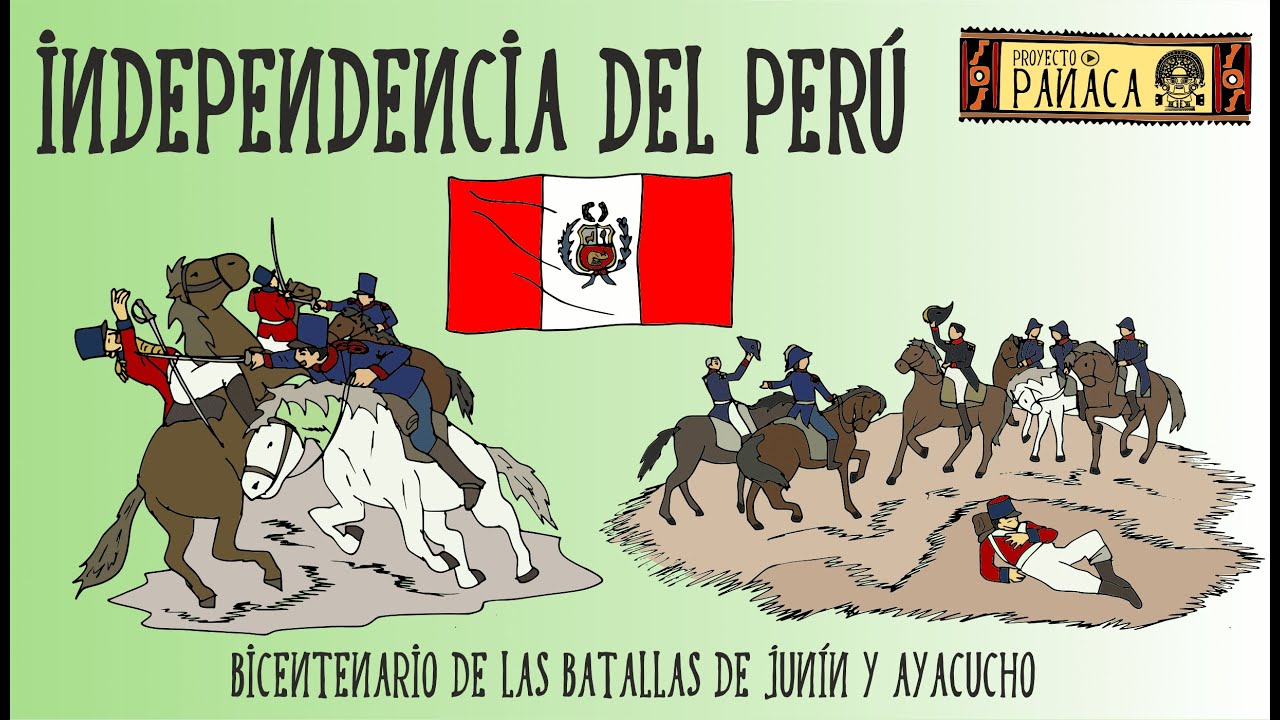Independencia del Perú: Corriente Libertadora del Norte | Bicentenario del Perú | 3/3
Summary
TLDREl video narra los eventos claves de la independencia de Perú, destacando la traición de líderes como Riva Agüero y Torre Tagle, la intervención decisiva de Simón Bolívar, y la batalla final en Ayacucho en 1824, que selló la independencia de Perú y América. Bolívar asumió el poder dictatorial para enfrentar a los realistas, mientras la traición de Torre Tagle y otros patriotas marcó un episodio oscuro. La victoria de los patriotas culminó con la rendición de las fuerzas realistas, la salida de La Serna y la caída del último bastión español en América en 1826. El video reflexiona sobre el sacrificio y la lucha por la libertad.
Takeaways
- ⚔️ Riva Agüero intentó negociar con La Serna para mantenerse en el poder, pero fue arrestado y deportado a Europa en noviembre de 1823.
- 📜 La constitución provisional de 1823 fue promulgada, aunque dependía de un congreso general para ser ratificada una vez terminada la guerra de independencia.
- 💥 El castillo del Real Felipe fue capturado por los españoles en febrero de 1824, debido a la descontento de las tropas patriotas que no recibían pago.
- 🛡️ Bolívar fue designado con poderes dictatoriales en 1824, debido a la urgencia de enfrentar al ejército español en la guerra de independencia.
- 🤝 Torre Tagle, tras perder su poder, traicionó a la causa patriota y comenzó a colaborar con las fuerzas realistas.
- ⚔️ La batalla de Junín en agosto de 1824 fue una victoria crucial para los patriotas, lograda sin disparar un solo tiro, luchando solo con espadas y lanzas.
- 🏞️ Bolívar reorganizó el ejército patriota en el valle de Huaraz y lo dividió en tres divisiones, preparándose para enfrentar a las fuerzas realistas.
- 🎖️ La batalla de Ayacucho en diciembre de 1824 selló la independencia de Perú y América, con la captura de La Serna y su ejército.
- 🏳️ Sucre concedió una capitulación generosa a las fuerzas realistas, permitiéndoles regresar a España con todo pagado por el estado peruano.
- 🛡️ La última resistencia realista en América fue la fortaleza del Real Felipe, que finalmente se rindió en enero de 1826, marcando el fin del dominio español en el continente.
Q & A
¿Cuál fue la razón principal por la que Riva Agüero buscó un acercamiento con La Serna?
-Riva Agüero buscó un acercamiento con La Serna para negociar directamente con España debido a su obstinación por mantenerse en el poder.
¿Qué respuesta obtuvo Riva Agüero de La Serna y qué implicaciones tuvo?
-La Serna respondió, pero su respuesta llegó a manos de Simón Bolívar, revelando las intenciones de Riva Agüero de entregar el gobierno al Viceroy de Perú, lo que llevó a su arresto y deportación a Europa el 25 de noviembre de 1823.
¿Cuál fue el papel de Bolívar en la dictadura impuesta por el Congreso de Perú en 1824?
-El Congreso de Perú determinó que solo un poder dictatorial podía enfrentar la lucha armada contra los españoles, otorgando a Bolívar la autoridad suprema política y militar, suspendiendo la constitución y las funciones de Torre Tagle como presidente.
¿Qué sucedió en el castillo del Real Felipe el 5 de febrero de 1824?
-El castillo del Real Felipe fue capturado y entregado a los españoles por Dámaso Moyano y el Sargento Oliva, quienes se amotinaron debido a la falta de pago y abandono de las divisiones no pertenecientes al ejército Gran Colombiano.
¿Cómo reaccionó Bolívar ante la traición de Torre Tagle y otros políticos?
-Bolívar, enfermo de malaria, observó la traición desde Pativilca. Una vez recuperado, se trasladó a Trujillo, declaró la ciudad como 'cuartel general' y solicitó más ayuda de la Gran Colombia, Argentina y Chile.
¿Qué estrategia utilizó Bolívar en la batalla de Junín y cuál fue el resultado?
-Bolívar concentró su ejército en el valle de Huaraz, dividió las tropas en tres divisiones y se enfrentó a Canterac en la pampa de Junín el 6 de agosto de 1824. La batalla, conocida como 'batalla de los sables' o 'batalla sin humo', resultó en una victoria patriota sin disparar un solo tiro.
¿Qué acontecimiento marcó el inicio de la batalla de Ayacucho el 9 de diciembre de 1824?
-El fuego comenzó a las 10 de la mañana con el ataque del ejército realista. La batalla fue decisiva y culminó con la captura de La Serna y sus generales, sellando la independencia de Perú y América.
¿Qué condiciones se establecieron en la capitulación de Ayacucho?
-La capitulación de Ayacucho permitió a los miembros del ejército realista regresar libremente a su país con todo pagado por el estado peruano, y reconoció la deuda contraída hasta ese día por el tesoro español en el territorio.
¿Qué ocurrió con los realistas que se encontraban en la fortaleza del Real Felipe tras la independencia de Perú?
-Los realistas, bajo el mando de Rodil, se resistieron hasta el 23 de enero de 1826, cuando finalmente se rindieron y recibieron amnistía general, permitiéndoles salir con honores de guerra.
¿Cuál es el mensaje final del guion sobre la independencia de Perú y los desafíos actuales?
-El guion destaca que la independencia de Perú fue un esfuerzo continental liderado por criollos como San Martín y Bolívar, pero logrado también por muchos peruanos. El mensaje final enfatiza la necesidad de honrar su sacrificio y continuar luchando contra enemigos contemporáneos como la ignorancia y la corrupción.
Outlines

此内容仅限付费用户访问。 请升级后访问。
立即升级Mindmap

此内容仅限付费用户访问。 请升级后访问。
立即升级Keywords

此内容仅限付费用户访问。 请升级后访问。
立即升级Highlights

此内容仅限付费用户访问。 请升级后访问。
立即升级Transcripts

此内容仅限付费用户访问。 请升级后访问。
立即升级浏览更多相关视频

Batallas de Junín y Ayacucho | Independencia del Perú | Bicentenario

Desobedeció una orden y cambió para siempre nuestra historia: Lo que no sabías de Batalla de Junín

Junin y Ayacucho, últimas batallas por la independencia.

Crónicas Bicentenarias | Episodio 1: "Independencia, Guerra y Revolución"

La batalla de Ayacucho: El momento que cambió la historia

Simón Bolívar - Hatun Aventuras Heroicas 🗡
5.0 / 5 (0 votes)
